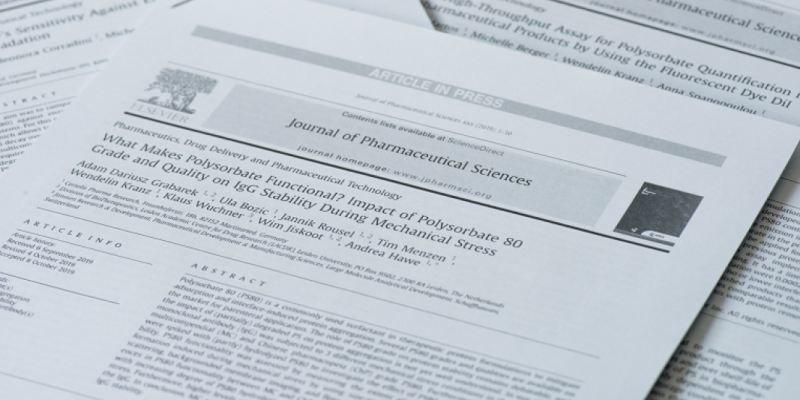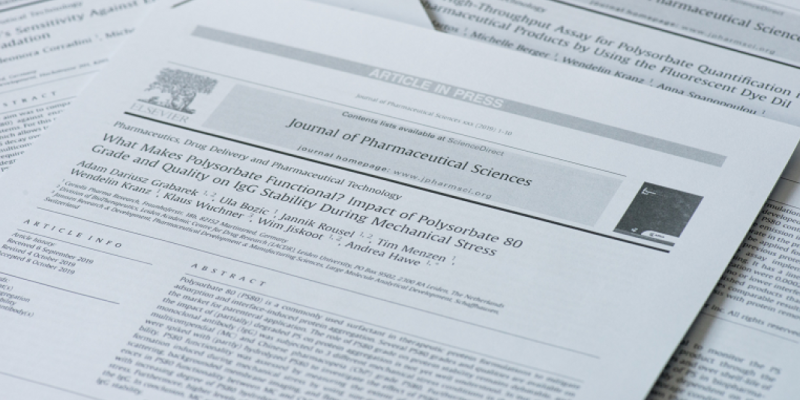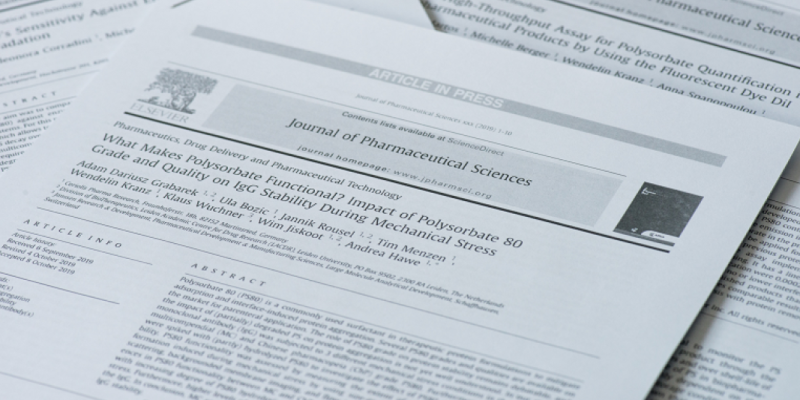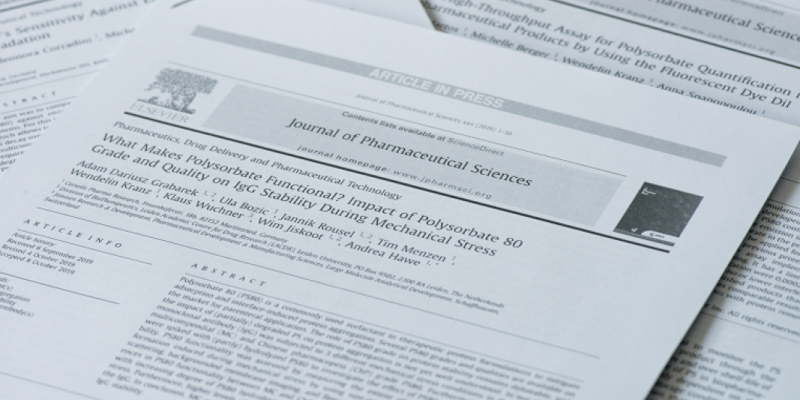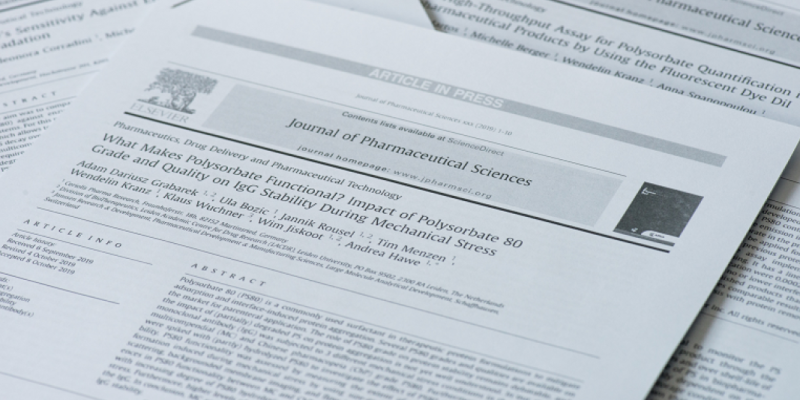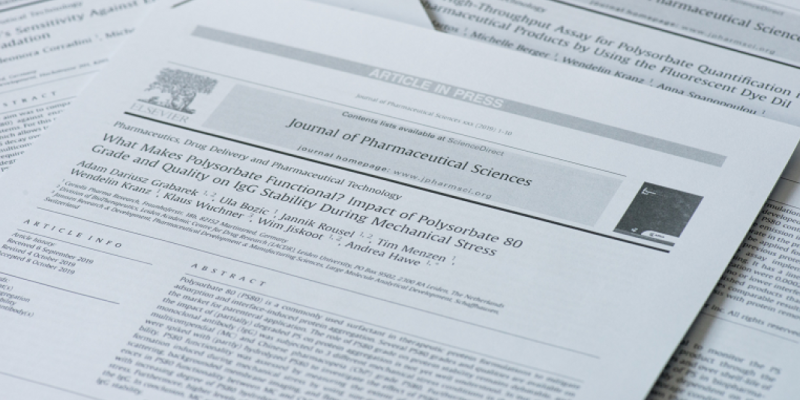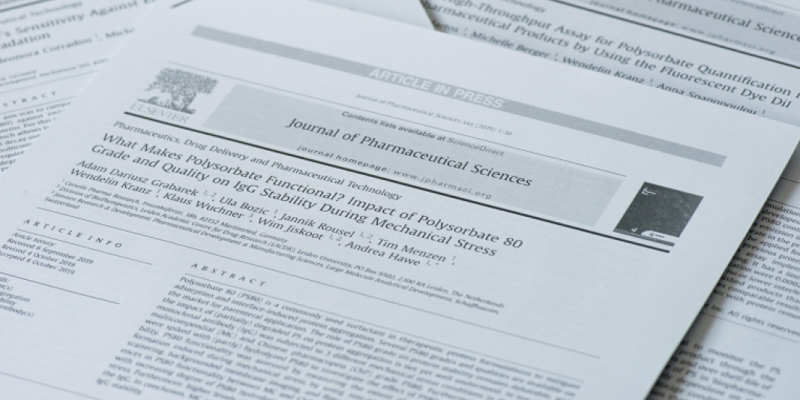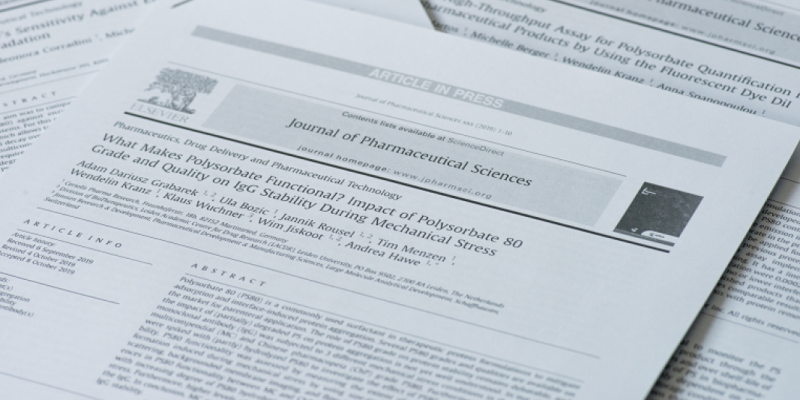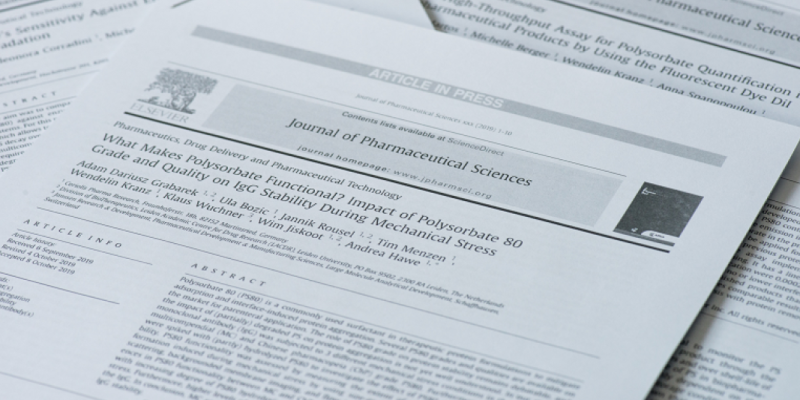Development of HSA-free formulations for a hydrophobic cytokine with improved stability.
Eur J Pharm Biopharm. 2008 Feb
The goal was to characterize a hydrophobic cytokine with respect to oxidation and aggregation, as well as its adsorption to the container at different pH and ionic strength conditions. The tendency of the cytokine to adsorb on surfaces and its low solubility at physiological pH were the main challenges during the development of HSA-free formulations for the cytokine. When the formulation pH exceeded 5.5 precipitation led to significantly higher turbidity. This turbidity increase and elevated aggregation as determined by HP-SEC and DLS was more pronounced at higher glycine and NaCl concentrations. With rising pH protein adsorption was more distinct compared to pH 3.0. However, protein adsorption could be minimized by polysorbate 20 or the use of glass type I(+). FTIR revealed a reduced thermal stability at higher pH values indicated by a declining denaturation temperature. Five liquid formulations in the pH range 3.5-4.5 and five lyophilized formulations at pH 4.0-5.0 were stored for 6 months and the stability was evaluated with respect to aggregation and chemical modification. Liquid formulations at pH 3.5-4.0 and lyophilized formulations at pH 4.0-5.0 were most stable during 6 months at 2-8 degrees C.
Eur J Pharm Biopharm. 2008 Feb
https://www.sciencedirect.com/science/article/abs/pii/S0939641107001592?via%3Di…


